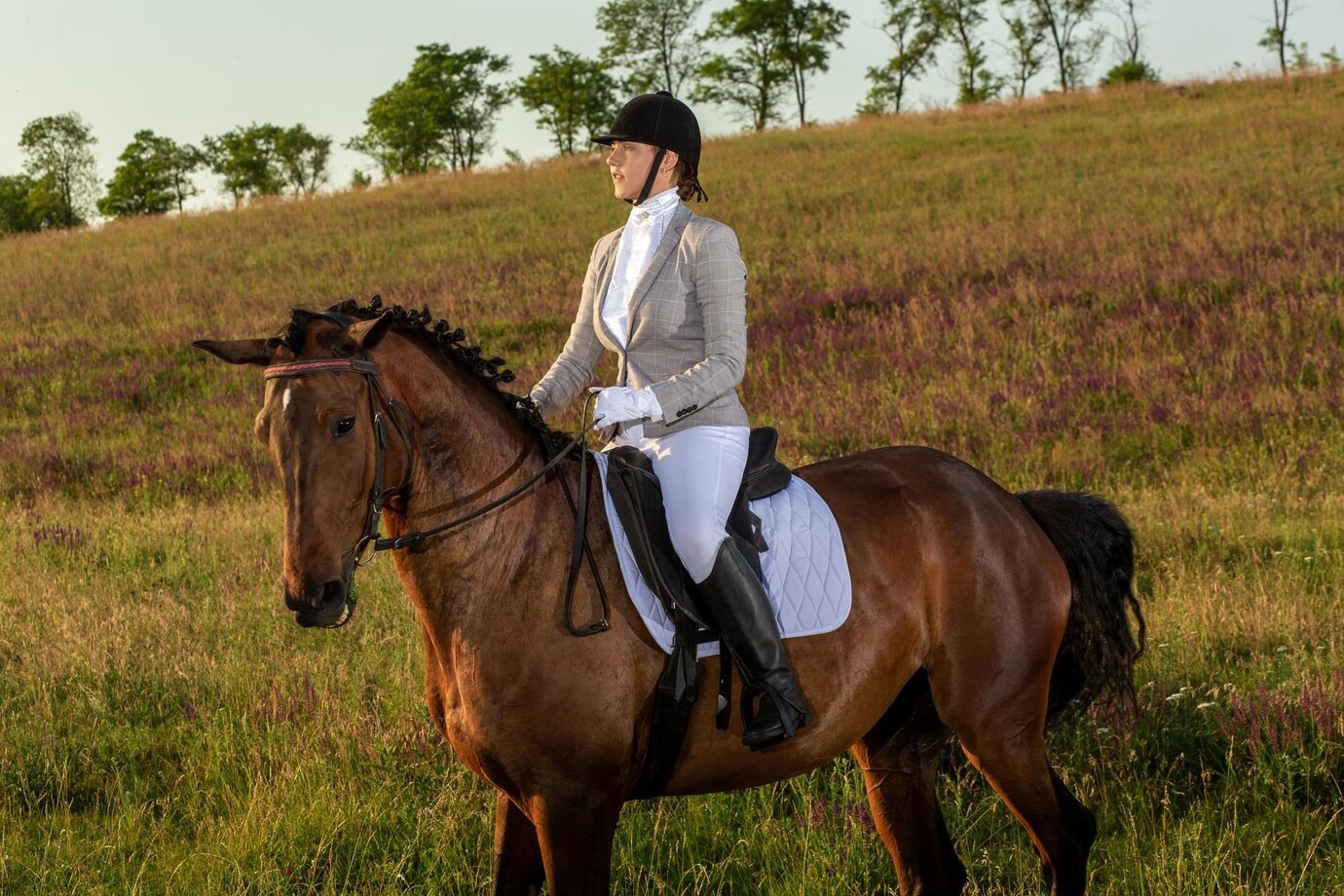In equestrian competitions, attire is a very important element. The strong sense of ritual in equestrianism dictates its high requirements for custom equestrian clothing. Modern equestrian competitions mainly include dressage, show jumping, and eventing. Different events have different dress codes.
Standard Attire: Tailcoat + white shirt + white gloves + white breeches + tall boots + top hat
Among the three types of competitions, dressage emphasizes ritual the most, and the rider's attire is the most elaborate. In competitions, both the rider and the horse must be adorned beautifully. The horse's coat must be groomed to a silky shine, its mane braided into neat little plaits, and the rider should wear a tailcoat, white shirt, white breeches, and tall boots, complemented by white gloves and a black broad-brimmed top hat, exuding elegance in every movement.

Standard Attire: Riding coat + shirt + dark gloves + boots + breeches + protective helmet
Compared to dressage, the attire for show jumping is much simpler. The riding coat in show jumping resembles a fitted casual blazer and has evolved from hunting jackets, giving it a gentlemanly flair. Men generally wear light-colored shirts and white ties inside, while women typically wear high-collared shirts without ties. Generally, dark-colored jackets are most common for riding coats. In some countries, regulations state that riders who wear red riding coats must have won national-level individual championships. It is important to note that riders in show jumping must wear protective helmets.
Standard Attire: polo shirt + boots + breeches + protective vest + helmet
In eventing, which includes dressage, show jumping, and cross-country, the cross-country phase is the most thrilling, exciting, and dangerous. The attire for cross-country includes a polo shirt, boots, breeches, and helmet, with a protective vest being essential. This vest has straps on the shoulders and waist, with a back plate to protect the vertebrae, providing protection for the lower back. In equestrian sports, helmets, boots, and protective vests are the most important safety gear. During arena jumping, fast riding, and cross-country riding, helmets and protective vests are indispensable.
As functional clothing, equestrian attire primarily needs to be durable. Special riding boots, breeches, chaps, and gloves are all treated in areas that come into contact with the horse or equipment to avoid potential friction injuries to the rider. For long periods of riding, the durability and wear-resistance of the clothing are particularly important. Besides durability, custom equestrian clothing should not impede movement. Thus, the elbows of the jacket should move freely, and the breeches should be form-fitting, with elastic or loose-elbow designs. In addition, equestrian attire must adhere to health principles, with summer fabrics that wick and evaporate sweat, while winter attire should be warm, windproof, and waterproof. Generally, medium-weight wool is preferred for jackets, and a bit of Lycra can increase flexibility. For breeches, to enhance comfort and durability, some manufacturers design full-seat breeches.